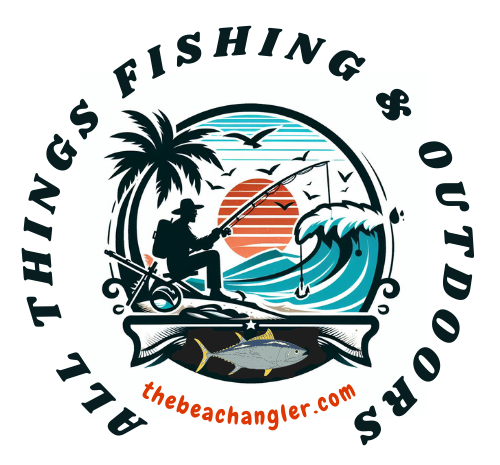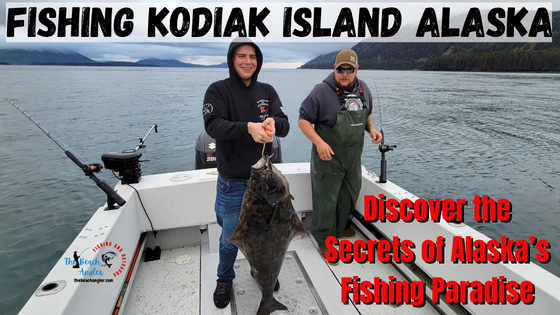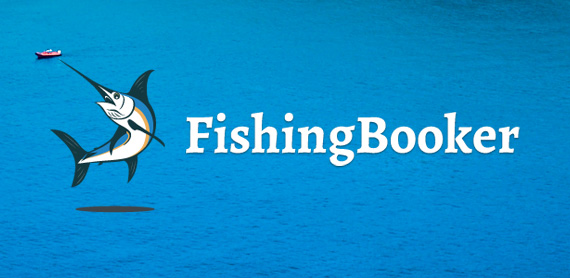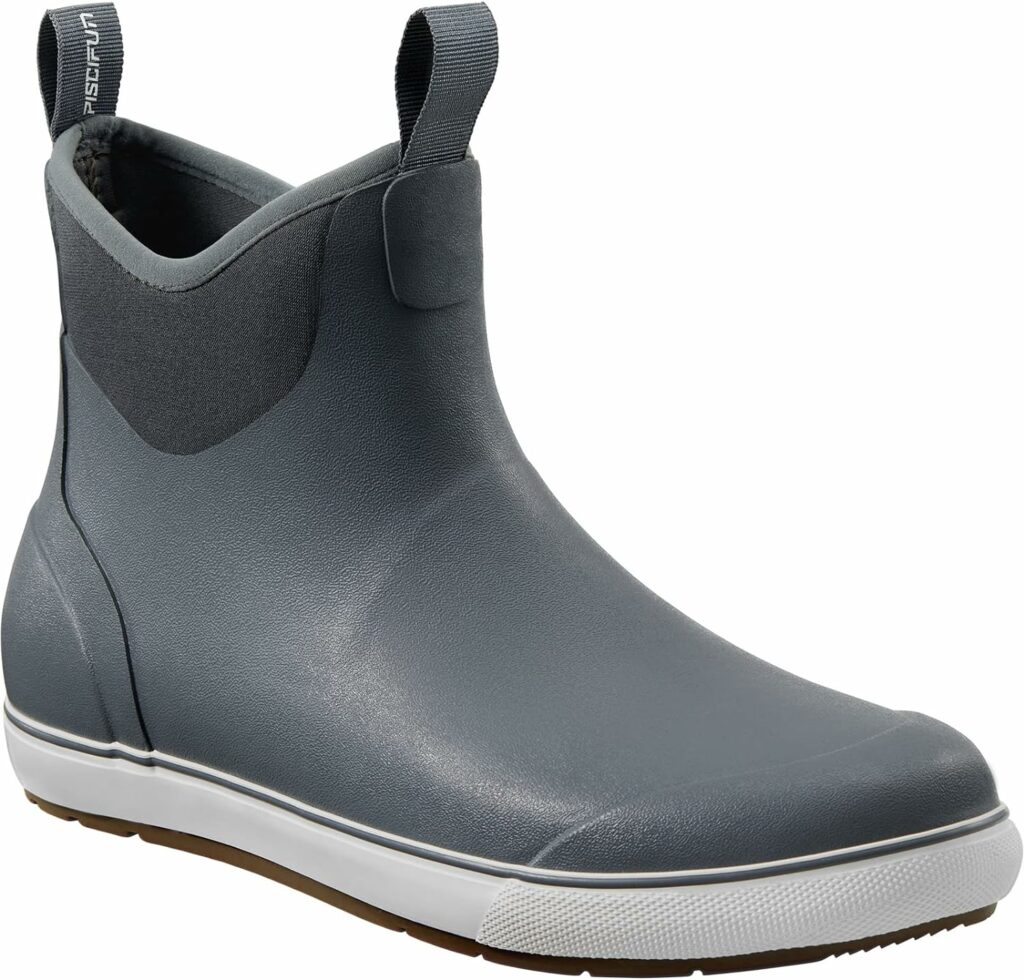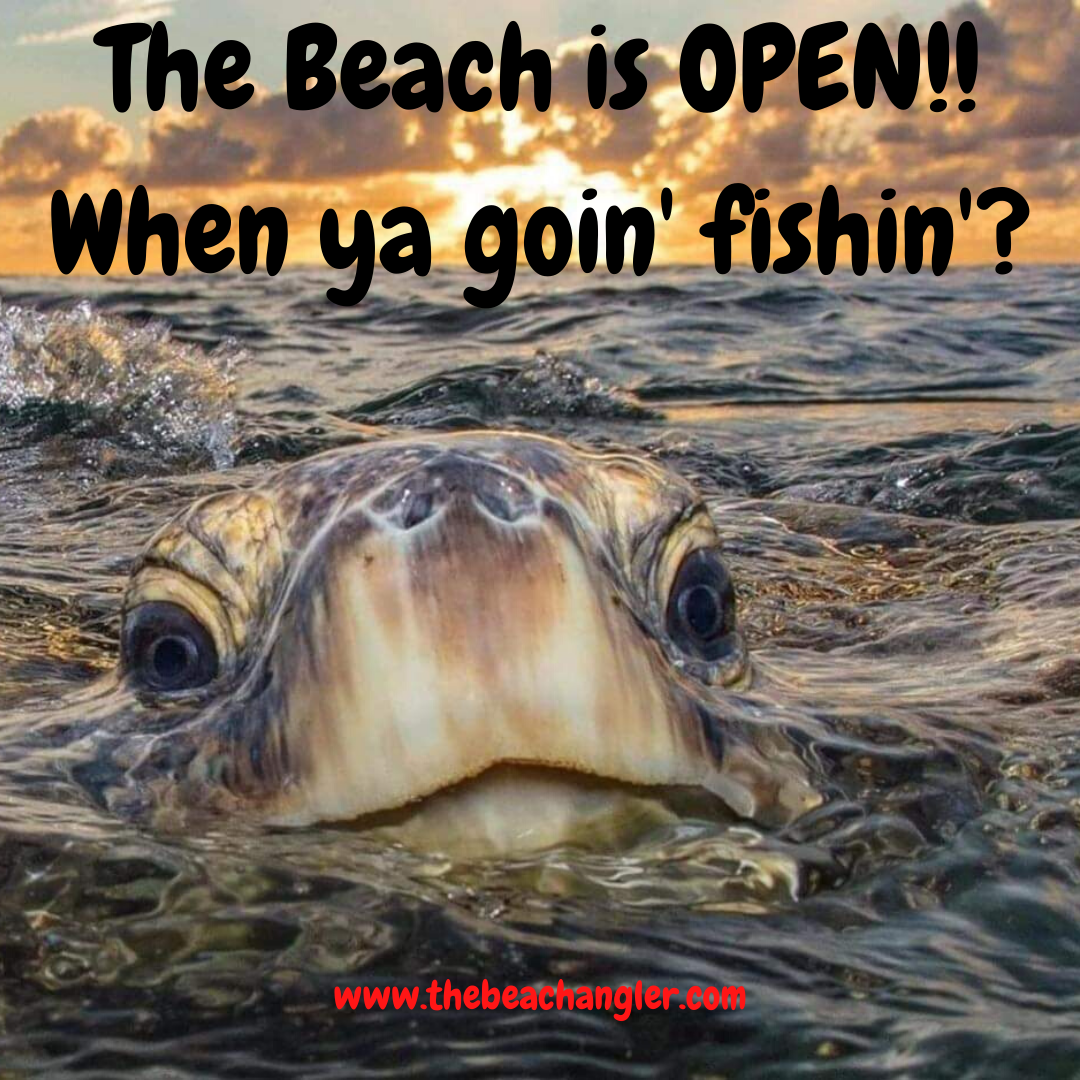Last updated on January 30th, 2024 at 11:21 pm
If you’re looking for an unforgettable fishing experience, Kodiak Alaska Fishing should definitely be on your list. With its rugged coastline, pristine waters, and abundance of fish species, Kodiak is a top destination for anglers from around the world. Whether you’re a seasoned pro or a beginner, there’s something for everyone when it comes to fishing in Kodiak.
Quick Look
Kodiak Island in Alaska is a top destination for anglers from around the world. Saltwater and freshwater fishing are both available on Kodiak Island, with a variety of fish species to be caught. You can fish offshore with a charter boat company, stay and fish with one of the many fishing lodges. Or, drive and hike to the many rivers, streams and lakes on the Island to “roadside” fish. Whichever you choose, you will create memories to last a lifetime in one of the most beautiful, scenic places on earth.
You will experience a fishing adventure that will challenge your skills, reward your efforts, and leave you with unforgettable memories, and sore arms. 😉 Fishing in Kodiak Alaska includes both saltwater and freshwater fishing opportunities. Saltwater fishing is particularly popular, with an abundance of halibut, salmon, rockfish, and lingcod to be caught.
Freshwater fishing is also available in the many rivers and streams flowing from the island, with salmon, trout and char being the most common species. Whether you choose to fish from shore or on a boat, you’re sure to have an unforgettable experience on Kodiak Island.
My dad, son, and I recently spent a day fishing in Kodiak Alaska with Discovery Charters out of Port Lions Alaska.
It was late in the season but Captain Grey Livingston was still able to put us on halibut up to 109 pounds. If you are considering a fishing trip to Alaska, I recommend you give him a call.
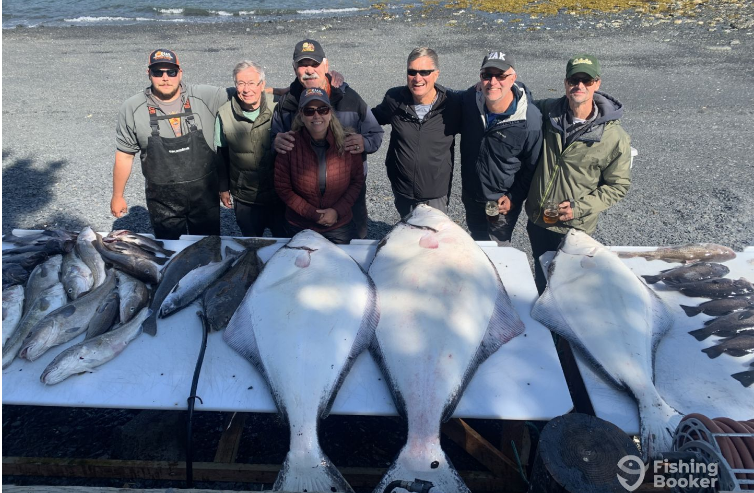
Now, that being said, understanding Kodiak Alaska will help you get the most out of your fishing adventure. The island is located in the Gulf of Alaska and is the second largest island in the United States. Kodiak Island is home to a diverse range of wildlife, including brown bears, bald eagles, and whales.
The island’s rich history and culture are also worth exploring, with museums, art galleries, and cultural centers showcasing the Aleut, Alutiiq, and Russian influences that have shaped the island’s identity.
Understanding Kodiak Alaska
If you’re planning a fishing trip to Kodiak Island, it’s important to understand the area and what it has to offer. Kodiak Island is the second largest island in the United States, located in the Gulf of Alaska about 250 south of Anchorage. It’s separated from mainland Alaska by Shelikof Strait. The only way to get there is either by airplane or boat.
Kodiak Island is a fishing paradise, with opportunities for both saltwater and freshwater anglers. The island is home to a diverse range of wildlife, including brown bears, bald eagles, and sea otters. Lots of sea otters, I mean seriously, lots and lots of sea otters. 🙂 The Kodiak National Wildlife Refuge covers nearly two-thirds of the island and is a popular spot for hiking, camping, and wildlife viewing.
When it comes to fishing, Kodiak Island is known for its prolific salmon, halibut, and rockfishing offshore, as well as epic stream and lake action inland. The island is also home to a variety of other fish species, including lingcod, trout and pacific cod.
There are several fishing charters and fishing lodges available on the island, offering guided trips to some of the best fishing spots. Many of these charters also provide all the necessary equipment and gear, making it easy for you to just show up and start fishing. They will also clean and pack your catch for transport back home.
It’s important to note that fishing regulations and limits vary depending on the species and location. Make sure to check with the Alaska Department of Fish and Game for the most up-to-date information before you head out on your trip. Kodiak Island offers a unique and exciting fishing experience for anglers of all skill levels. With its stunning scenery and abundant wildlife, it’s also a great destination for nature lovers and outdoor enthusiasts.
Kodiak Alaska Weather
Kodiak Island Alaska is located in the Gulf of Alaska, and has a subpolar oceanic climate. This means that the island experiences cool summers and mild winters, with abundant precipitation throughout the year.
The average high temperature in July is 60 degrees Fahrenheit, while the average low temperature in January is 29 degrees Fahrenheit.
The island also receives an average of 78 inches of rain and 62 inches of snow annually. Kodiak weather can vary significantly depending on the location, elevation, and exposure to the ocean currents and winds.
Kodiak Island Alaska is known for its frequent fog, strong storms, and high humidity. And, the weather can vary greatly within the same day so be prepared.

Some of the typical weather patterns for Kodiak Island Alaska are:
- Rain showers: Kodiak Island Alaska often experiences rain showers, especially in the fall and winter months. Showers are usually light to moderate, but can sometimes be heavy and cause flooding. They can occur at any time of the day or night, and can last from a few minutes to several hours. These rain showers can reduce visibility and make driving conditions hazardous, and fishing conditions miserable.
- Mostly cloudy: Kodiak Island Alaska has a lot of cloud cover, especially in the winter months. Clouds can form at different altitudes, and can range from thin and wispy to thick and dark. They can block out the sun and create a gloomy atmosphere. The clouds can sometimes produce rain or snow, depending on the temperature and pressure.

- Light rain: Kodiak Island Alaska has light rain, which is a type of precipitation that falls from the sky in small droplets. Light rain is usually gentle and steady, but can sometimes be intermittent and variable. These light rain showers can wet the ground and create puddles, but does not usually cause flooding.
- Partly sunny: Kodiak Island Alaska has some sunny days, especially in the spring and summer months. Sunny days are usually clear and bright, with few or no clouds. The sunny days can warm up the air and create a pleasant environment. They can also increase visibility and make outdoor activities more enjoyable. However, sunny days can sometimes be windy, depending on the direction and speed of the air currents. And, with the winds come waves.
On our recent trip, we experienced all of the above. From low overcast with light rain, to windy, to calm and sunny all in less than 48 hours. So, just be prepared for anything, dress in layers and by all means bring rain gear.
Why Kodiak Alaska Fishing?
There are many reasons why fishing Kodiak Alaska is a great idea, but here are some of the most compelling ones:
- Kodiak Island is the second-largest island in the United States, with a diverse landscape of mountains, forests, rivers, and coastlines.
- It has a mild maritime climate, with moderate temperatures and rainfall throughout the year.
- Kodiak is home to a variety of wildlife, including bears, whales, sea lions, sea otters, bald eagles, puffins, and more.
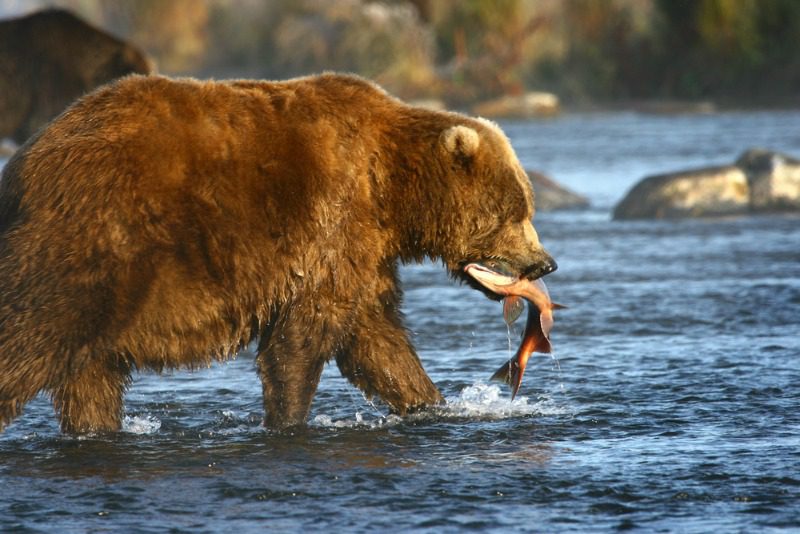
- It has a rich fishing history and culture, dating back to the native Alutiiq people who relied on the sea for their subsistence.
- Kodiak has some of the best fishing in Alaska, with world-class saltwater and freshwater fisheries.
How to Fish in Kodiak Alaska?
There are two main ways to fish in Kodiak: deep-sea fishing and roadside fishing. Both methods have their advantages and disadvantages, depending on your budget, preference, skill level, and time availability. Let’s take a closer look at each one.
Deep-Sea Fishing
Deep-sea fishing is the most popular and exciting way to fish in Kodiak. It involves chartering a boat and going offshore to target halibut, salmon, cod, rockfish, and other species. You can choose from a variety of charter options, from remote lodges with daily fishing trips to in-town departures for half-day or full day excursions. You can also choose from different types of boats, from large vessels with cabins and amenities to smaller skiffs with more flexibility and mobility.
| Benefits of Deep-Sea Fishing Kodiak |
|---|
| You can catch bigger and more diverse fish than on land. |
| Access more fishing spots that are not reachable by road or foot. |
| Enjoy the thrill of fighting a powerful fish on a rod and reel. |
| Experience some amazing scenery and wildlife on your way to and from the fishing grounds. |
| Drawbacks of Deep-Sea Fishing Kodiak |
|---|
| You have to pay more for a charter trip than for a roadside fishing trip. |
| Trip will depend on the weather and sea conditions for your safety and comfort. |
| Follow strict fishing regulations and limits to protect the fishery and avoid fines. |
| Deal with seasickness if you are prone to it. |
What to Expect from a Deep-Sea Fishing Trip?

A typical deep-sea fishing trip lasts from 4 to 10 hours, depending on the charter option you choose. You will usually depart early in the morning from the harbor or lodge and head out to the open water.
You will then fish for different species using different techniques, such as trolling for king salmon, anchoring up and jigging for halibut, rockfish or lingcod.
You will be able to keep some of your catch (subject to regulations and limits), which will be cleaned and filleted for you by the crew. You will then return to the harbor or lodge with your fish and memories of a great day on the water. We booked our trip with fishingbooker.com and chose to fish with Captain Grey Livinston of Discovery Charters. He provided a comfortable boat, as seen above, first class equipment, and he put us on some great halibut fishing. He’s very personable and fun to fish with as well.
What are the Best Spots for Deep-Sea Fishing in Kodiak?
Kodiak has many productive fishing spots around the island, but some of the most popular ones are:
- Chiniak Bay: This is a large bay on the eastern side of the island that offers excellent fishing for halibut, salmon, cod, rockfish, and more. It is also close to town and accessible by most charter boats.
- Marmot Bay: This is another large bay on the northern side of the island that has similar fishing opportunities as Chiniak Bay. It is also known for its scenic beauty and wildlife sightings.
- Alitak Bay: This is a remote bay on the southern tip of the island that is only accessible by floatplane or boat. It has some of the best halibut fishing in Alaska, as well as salmon, cod, rockfish, and lingcod. It is also home to some historic sites and native villages.
What are the Best Seasons for Deep-Sea Fishing in Kodiak?
Deep-sea fishing is available year-round in Kodiak (except December), but some seasons are better than others for certain species. Here is a general overview of the best months for each type of fish:
- Halibut: Halibut fishing is another popular type of fishing in Kodiak. Halibut are flatfish that can weigh up to 500 pounds. They are usually caught in water that is 100 to 300 feet deep. Halibut are present throughout the year in Kodiak waters but are most abundant from May to September. The peak months are June and July when they move closer to shore to feed on spawning herring.
- Salmon: Salmon are also present throughout the year in Kodiak waters but have different runs depending on the species. King salmon are available from May to October, with the peak months being June and July. Silver salmon are available from July to November, with the peak months being August and September. Pink salmon are available from July to September, with the peak month being August. Sockeye salmon are available from June to August, with the peak month being July.

- Cod: Cod are abundant in Kodiak waters and can be caught year-round. However, the best months are from October to April when they move closer to shore and form large schools.
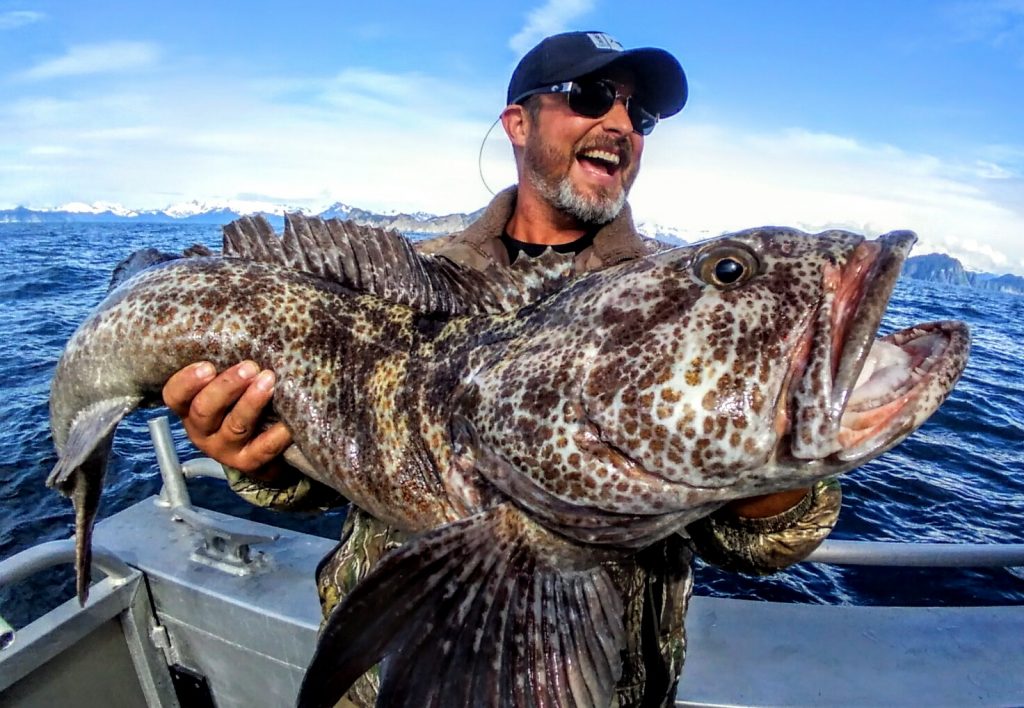
- Rockfish: Rockfish are also abundant in Kodiak waters and can be caught year-round. However, the best months are from May to October when they are more active and feed near the surface.
- Ling Cod: Ling cod are a prized catch in Kodiak waters and can be caught from July to December. They are aggressive predators that lurk near rocky reefs and ledges.
What are the Best Tips for Deep-Sea Fishing in Kodiak?
Here are some tips to help you have a successful and enjoyable deep-sea fishing trip in Kodiak:
- Book your charter in advance: Kodiak is a popular fishing destination and charter boats can fill up quickly, especially during the peak season. To ensure you get the best option for your needs, book your charter as early as possible. Our trip was last minute, so I had some difficulty finding a charter.
- Dress appropriately: Kodiak weather can be unpredictable and changeable, so be prepared for any conditions. Wear layers of warm and waterproof clothing, sturdy shoes or boots, sunglasses, hat, and gloves. You may also want to bring a rain jacket or poncho, just in case.
- Follow the rules: Kodiak has strict fishing regulations and limits that you must follow to protect the fishery and avoid fines. Your charter captain and crew will inform you of the rules and help you comply with them. You will also need a valid Alaska fishing license, which you can purchase online or at local vendors.
- Listen to your captain and crew: Your charter captain and crew are experienced professionals who know the best spots, techniques, and tips for fishing in Kodiak. They will also ensure your safety and comfort on board. Listen to their instructions and advice, and don’t hesitate to ask questions or seek help if you need it.
- Have fun: Fishing in Kodiak is an amazing experience that you will remember for a long time. Enjoy the thrill of catching a big fish, the beauty of the scenery, the wildlife encounters, and the camaraderie of your fellow anglers. Take pictures, share stories, and have fun.
Roadside Fishing Kodiak Alaska
Roadside fishing is a more affordable and accessible way to fish in Kodiak. It involves driving or hiking to one of the many rivers or lakes on the island and casting for salmon, trout, char, or grayling. You can use your own gear or rent it from local shops or lodges. You can fish on your own or hire a guide for more assistance and expertise.
| Benefits of Roadside Fishing Kodiak |
|---|
| Fish at your own pace and schedule. |
| Explore different fishing spots without spending too much time or money on transportation. |
| You can enjoy the tranquility and solitude of nature. |
| Learn new skills and techniques from local guides or anglers. |
| Drawbacks to Roadside Fishing Kodiak |
|---|
| You may not catch as many or as big fish as on a boat. |
| You may have to deal with crowded or overfished spots during peak seasons. |
| You have to watch for bears or other wildlife that may be attracted by your fish or gear. |
| You may have bugs or mosquitoes that may bother you while fishing. |
We rented a car and took a driving tour of the island. There are numerous rivers, streams and lakes that are easily accessible by road as well as some great beaches for those who want to try their hand at surf or shore fishing Kodiak island. As an added bonus, when roadside fishing you will get to take in some beautiful scenery and likely spot a variety of wildlife as well.

What to Expect from a Roadside Fishing Trip?
A typical roadside fishing trip lasts from a few hours to a full day, depending on your preference and availability. You will usually drive or hike to a river or lake that has good fishing potential and access. You will then fish for different species using different techniques, such as fly fishing, spinning, or bait casting. You will be able to keep some of your catch (subject to regulations and limits), which you can cook on site or take home with you.
Be prepared for rain and weather changes, and for walking or wading the rivers and lakes. Bring your rain gear and, if you will be wading, waders and comfortable wading boots.
Charter Fishing in Kodiak
Kodiak Island is home to some of the richest fishing grounds in the world, and charter fishing is a popular way to explore the area’s abundant marine life. Fishing Charters provide the gear, bait, and boat, as well as an experienced captain/guide to give your the best chance for having a successful and safe trip.
When you book a charter fishing trip in Kodiak, you’ll have the opportunity to catch a variety of fish species, including halibut, salmon, rockfish, and lingcod. Experienced fishing guides will take you to the best fishing spots, provide you with all the necessary gear and equipment, and offer valuable tips and techniques to help you find and catch fish.
There are several charter fishing companies in Kodiak that offer a range of fishing packages to suit your needs and preferences.
Some companies specialize in halibut fishing, while others focus on salmon or multi-species fishing trips. You can choose from full-day or half-day trips, and some companies even offer overnight fishing adventures.
Charter fishing in Kodiak is a great way to explore the island’s stunning scenery and wildlife. During your trip, you may spot whales, sea otters, seals, and other marine animals.
You’ll also have the opportunity to take in the breathtaking views of the island’s rugged coastline and snow-capped mountains.

Before you book your charter fishing trip in Kodiak, it’s important to do your research and choose a reputable company with experienced guides and well-maintained boats. You should also check the company’s safety record and read reviews from previous customers to ensure a safe and enjoyable fishing experience. Sites like fishingbooker.com have reviews and a vetting process for charters.
Charter fishing in Kodiak is an unforgettable adventure that offers the chance to catch some of the biggest fish in the world while exploring one of the most beautiful places on earth.
Fishing Lodges in Kodiak
Kodiak Island is a popular destination for fishing enthusiasts from around the world, and there are several fishing lodges in the area that cater to their needs. Here are just some of the top fishing lodges in Kodiak:

Kodiak Lodge
Kodiak Lodge is a premier fishing lodge located on Kodiak Island. The lodge offers upscale accommodations for up to 8 guests per week, ensuring a high level of service.
The lodge has been in business for nearly 40 years, and their passion for fishing runs deep. They offer fishing packages for salmon and halibut, as well as hunting packages for those interested.
Kodiak Legends Lodge
Kodiak Legends Lodge is located in Larsen Bay, a small remote town roughly 60 miles southwest of the city of Kodiak. The lodge is only accessible by airplane or boat, as there are no roadways through Kodiak’s untouched wilderness. The lodge sits on the shores of Uyak Bay, which is known for its excellent saltwater fishing. They offer fishing packages for salmon, halibut, and lingcod.
Driftwood Wilderness Lodge is located on a secluded lagoon with breathtaking views of Uyak Bay. The small village of Larsen Bay is very close to the lodge and is home to about 100 year-round residents.
The lodge offers fishing packages for salmon, halibut, and lingcod, as well as bear viewing and kayaking packages.
Driftwood Wilderness Lodge
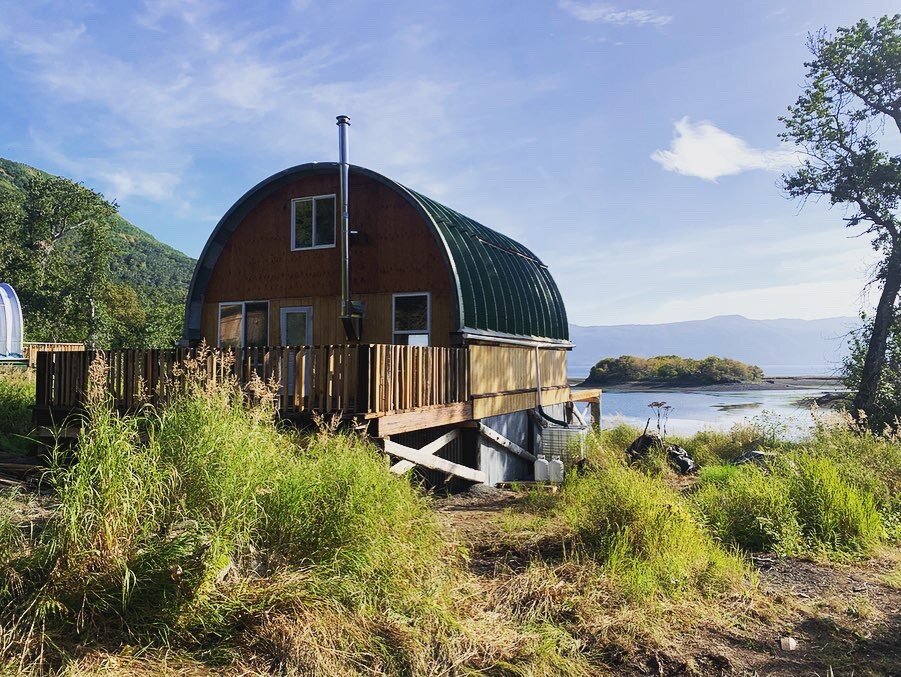
Kodiak Island Resort
Kodiak Island Resort is a full-service fishing lodge located on Kodiak Island. The lodge offers accommodations for up to 12 guests, and they offer fishing packages for salmon, halibut, and rockfish. They also offer hunting packages for those interested.
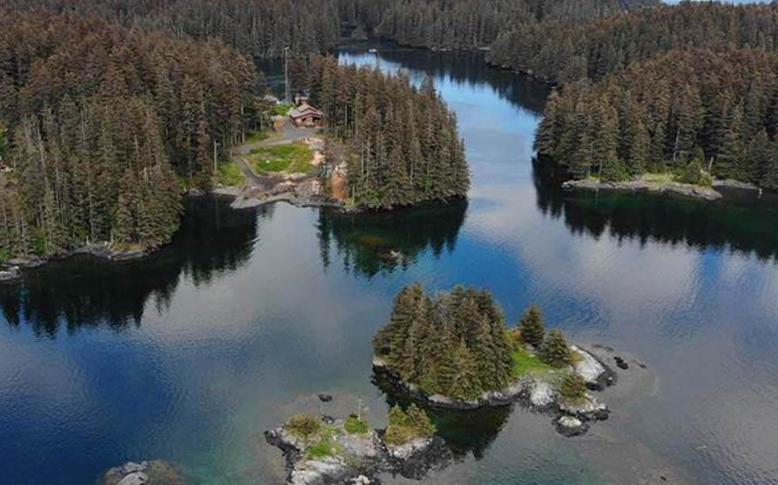
Afognak Wilderness Lodge
Afognak Wilderness Lodge is located on Afognak Island, which is just a short boat ride from Kodiak Island. The lodge offers fishing packages for salmon, halibut, and rockfish. They also offer bear viewing and kayaking packages.
These are just a few of the many fishing lodges in Kodiak. Each lodge offers something unique, so be sure to do your research and choose the lodge that best fits your needs.
Practical Tips for Fishing in Kodiak AK
When planning a fishing trip to Kodiak Island, there are several practical things to consider. Here are some tips to help make your trip a success:
Licenses and Regulations
Before you start fishing, you’ll need to purchase a fishing license. You can buy a license online or in person at many local retailers. Be sure to check the regulations for the specific area you plan to fish, as different areas may have different rules for bag limits, size limits, and gear restrictions. The Alaska Department of Fish and Game website has up-to-date information on regulations for Kodiak Island fishing.
Gear and Equipment
When packing for your trip, keep in mind that Kodiak Island can have unpredictable weather, so it’s best to bring layers and rain gear. You’ll also want to make sure you have appropriate fishing gear for the type of fishing you plan to do. If you’re planning to fish for salmon, you’ll need a rod and reel that can handle the size and strength of these fish. If you plan to fish for halibut, you’ll need a heavier rod and reel, and possibly a downrigger or other specialized equipment. If you use a charter company or lodge, they will have the appropriate fishing gear for you.
Best Times to Fish
The fishing season on Kodiak Island varies depending on the species of fish you’re targeting. Generally, the best time to fish for salmon is from June to September, while halibut fishing is best from May to September. Keep in mind that weather and ocean conditions can impact fishing success, so it’s always a good idea to check the weather forecast and talk to local experts for advice on the best times and locations to fish.

Fishing Charters and Guides
If you’re new to Kodiak Island fishing or want to improve your chances of success, consider hiring a fishing charter or guide. There are many experienced guides and charters available on the island who can provide equipment, expertise, and local knowledge to help you catch more fish. Booking a charter or guide in advance is recommended, especially during peak fishing season.
Safety Considerations
Fishing in Kodiak Island can be a thrilling and rewarding experience, but it’s important to prioritize safety. Always wear a life jacket when on the water, and make sure you have appropriate safety gear on board, such as flares and a first aid kit. Be aware of weather conditions and ocean currents, and never take unnecessary risks. If you’re fishing from shore, be aware of your surroundings and watch for bears and other wildlife.
Kodiak Alaska Fishing Frequently Asked Questions
What are some recommended Kodiak Island fishing lodges?
Kodiak Island is home to several top-rated fishing lodges, including Kodiak Legends Lodge, Kodiak Island Resort, and Kodiak Island Charters. Each lodge offers unique amenities and experiences, so it’s important to research and choose the one that best fits your needs and preferences.
What are the best rivers for fishing on Kodiak Island?
Kodiak Island is known for its excellent salmon fishing, and some of the best rivers for fishing include the Karluk River, Ayakulik River, and Buskin River. These rivers offer a variety of salmon species, including king, sockeye, and coho.

What types of fish can be caught on Kodiak Island?
Kodiak Island offers a diverse range of fish species, including salmon, halibut, lingcod, rockfish, Dolly Varden, and steelhead and rainbow trout. The type of fish you can catch will depend on the time of year and location.
What are the regulations for fishing in Kodiak, Alaska?
Fishing regulations in Kodiak, Alaska are set by the Alaska Department of Fish and Game. It’s important to review and follow these regulations to ensure sustainable fishing practices and to avoid fines. Some regulations include bag limits, size limits, and closed seasons for certain fish species.

When is the Kodiak salmon run and where are the best spots to fish?
The Kodiak salmon run typically occurs from May to September, with peak times varying depending on the species and location. The Karluk River and Buskin River are popular spots for salmon fishing, but there are many other rivers and streams on Kodiak Island that offer great fishing opportunities.
What is the limit for halibut fishing on Kodiak Island?
The limit for halibut fishing on Kodiak Island is set by the Alaska Department of Fish and Game and varies depending on the time of year and location. It’s important to review and follow these regulations to ensure sustainable fishing practices and to avoid fines.
Plan a Trip North to Kodiak Island Alaska
There you have it, Kodiak Island is a great destination for anglers of all skill levels. Whether you are interested in salmon, halibut, rockfish, lingcod, or fly fishing for trout, you are sure to have a great time on the island. With its beautiful scenery and abundant fish population, Kodiak Island is a must-visit destination for any angler.
Kodiak Island is a fishing paradise, with abundant opportunities for both saltwater and freshwater anglers. Whether you are looking for trophy halibut, king salmon, lingcod cod, or trout, you will find them in the rich waters of Kodiak, one of the best fishing destinations in the world, bar none!
Check out FishingBooker.com for more on Discovery Charters, or contact any of the lodges and charter companies mentioned here and start making plans for your Kodiak Alaska Fishing Adventure.
It will be an experience you will never forget, and when you leave, on your flight home you’ll be making plans for returning for another Kodiak fishing adventure.
As always, stay safe, enjoy the journey and please try to leave it cleaner than you found it. If you have any comments, questions, ideas or suggestions please leave them in the comment section below and I’ll get back to you asap.
You can follow us on Facebook: Rex The Beach Angler, Instagram: thebeachangler7, Twitter: @AnglerBeach, and YouTube: Man Art Creations.

P.S. – Thanks so much for checking out our blog we really appreciate it. Just so you know, we may receive a commission if you click on some of the links that appear on our site. This helps us keep our content free and up-to-date for everyone. We appreciate your support!
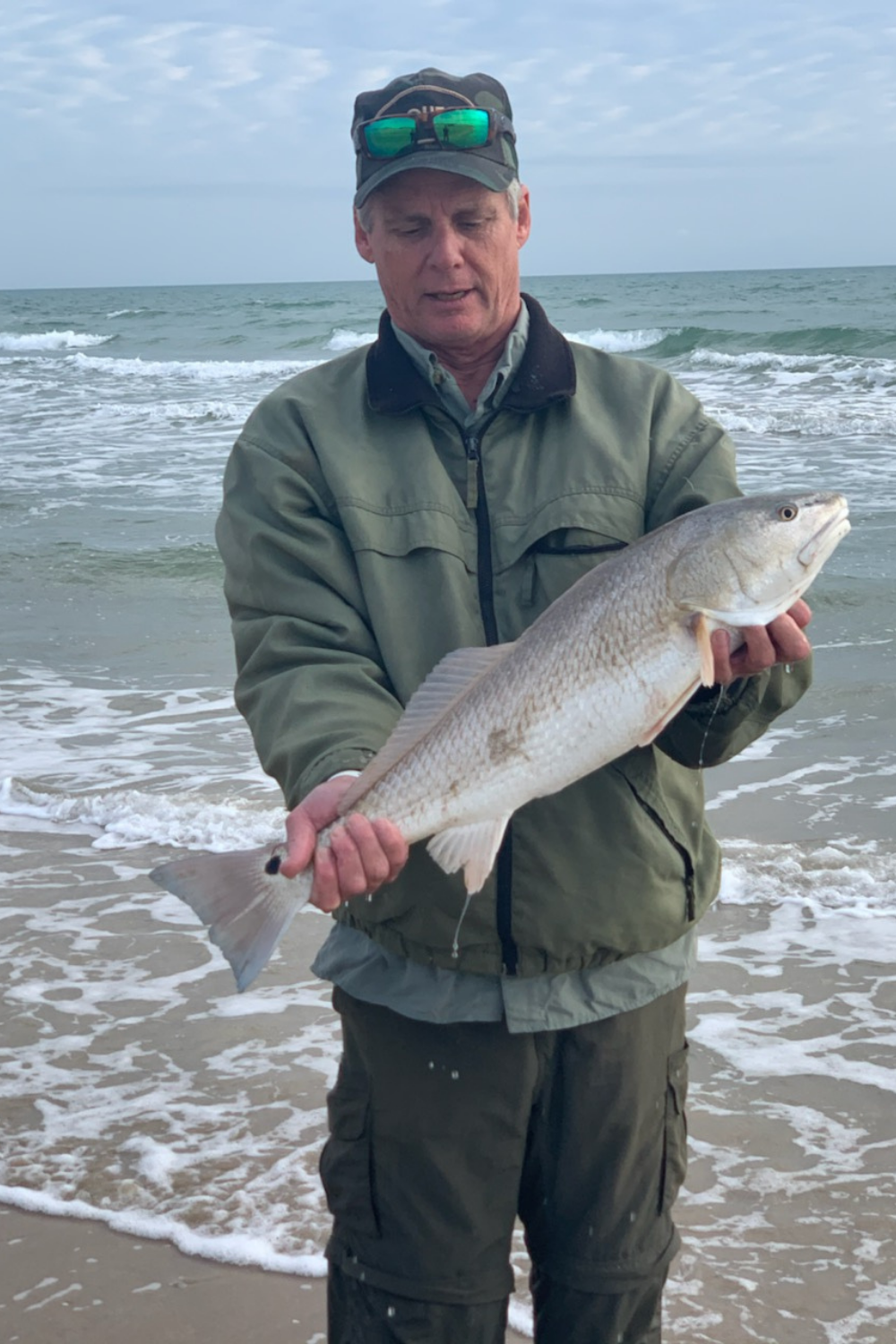
A life long surf fisherman with 50+ years of experience, I am also an avid hunter and outdoorsman. I will be sharing my passion for the outdoors with you so be prepared for hunting, fishing, camping, hiking and more. Along with gear reviews and the latest trends and innovations in the outdoor industry.
